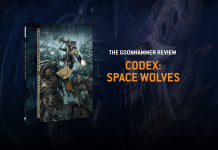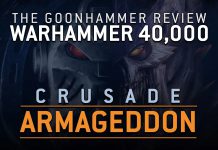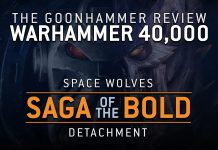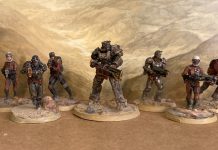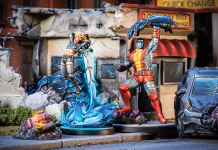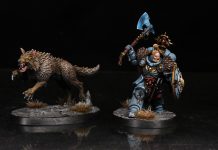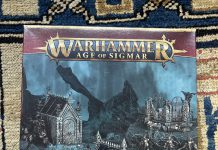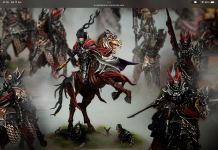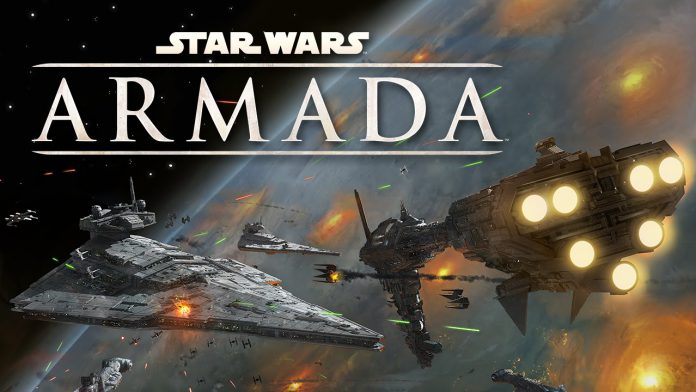Hi, it’s Summer here. Welcome to the Dockyard, a series where we discuss the capital ships of Star Wars: Armada. You can expect Dockyard articles to be a tour of the warships of Armada in accordance to a theme, or focusing on a single hull. Summaries, recommendations and opinions for everyone. Today: the heavy hitters of the Rebel Alliance.
The Big Stick – “Unthinking obedience means a lack of flexibility.”
The Rebel Alliance boasts the most numerous selection of large-base ships in Star Wars: Armada. At time of writing, they had 9 variants spread across 5 different hulls. Players are spoiled with every type of firepower (frontal, broadside and both), strong shields and capable commanders to make them shine. You’d be forgiven for thinking that the Empire would dominate the large hull game in Armada, but the Empire specialises in star destroyers, while the Rebels specialise in kitchen sink combat. It’s a philosophy of standardisation versus using everything on hand. You’ll be seeing a lot of comparison with the Empire here, both for lore relevance and because the Empire faction provides a large enough sample to make for fair comparison to the Rebels.
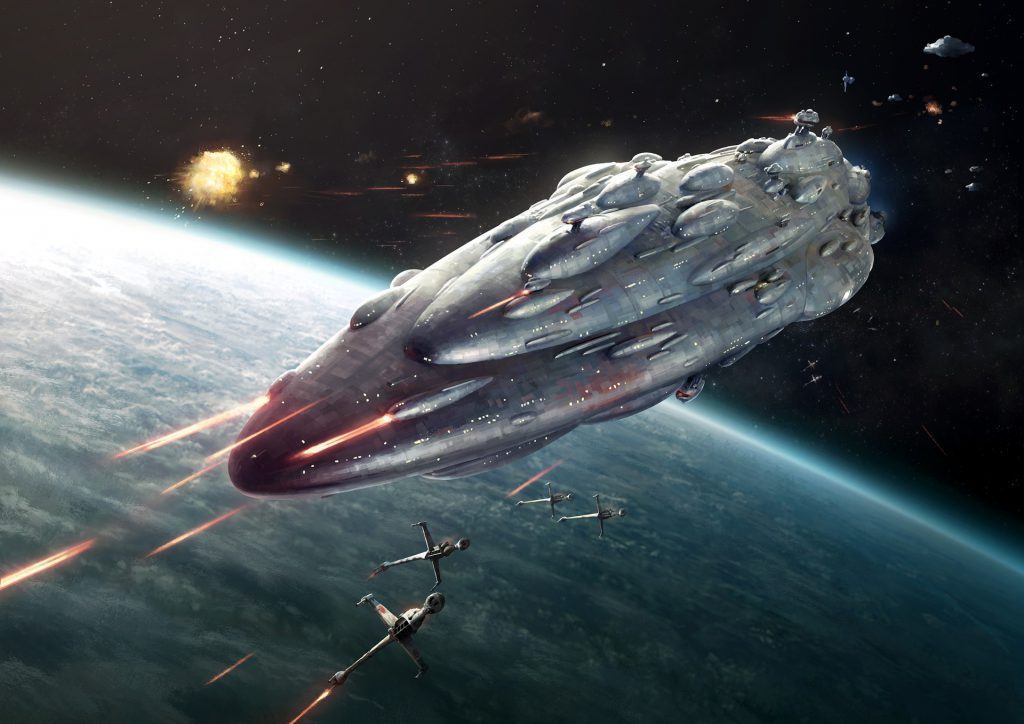
Fittingly for the alliance, their ships are well-shielded and have low hull values. Only one Rebel large ship (MC80 Liberty) has less total shields than an Imperial large ship, and it’s cheaper than most of them. This flips when it comes to hull values. Only one Rebel large ship (Starhawk) has more total hull HP than an Imperial large ship. They match their Imperial counterparts in manoeuvrability for the most part, although a few of the Rebel offerings are limited to the pitiful Speed 2.
Firepower-wise, you’re throwing out a cost-appropriate number of dice per ship, but the real nuance is what upgrades you’re bringing, which of your ships can use Salvo effectively, and who is bringing black dice. That last question is especially important, as 4 of the Rebel large ship variants have no black dice whatsoever and the Imperials only have to deal with that problem on 2 of their Star Destroyer variants. The Imperial large ships also have a better spread of ordnance upgrades, since only a single Rebel large ship type has the Ordnance slot needed to support black dice (the MC75 variants). This is where you’ll see the trend of Imperial large ships delivering knockout punches using black dice, while Rebel large ships normally treat their black dice as a bonus during a crucial round of drive-by action.
A summary of Rebel large ships looks a bit like this:
- Massive variety of reasonably specialised hulls to pick from
- Great shields, sub-par hull HP
- On-par manoeuvrability with a few slow ships
- Wide range of firepower options, but lacking in black dice specialisation
- Wide cost bracket offers flexible fleet building
The Ships – “Make no mistake, the Mon Calamari saved the galaxy.”
This is the odd duck. The cheapest Rebel large ship (in points, not $$$) was released in 2022 as part of the first print-and-play expansion, Rapid Reinforcements I. It’s based on the Rebel One, a repurposed and retrofitted Providence-class warship of Separatist pedigree. It flies like a brick, exceeds the more expensive MC80 Liberty in defensive stats, and comes with a great set of defence tokens. Its firepower is broadside-focused, but it has the characteristically weak side shields of the Providence. You’ll have to confront the reality that bringing your strongest battery fire onto the enemy will also expose your weaker sides.
The really interesting thing about the Rebel Providence is its upgrade bar. It only contains duplicate upgrade slots. This ship is built entirely on the idea that its upgrades will accommodate for its mediocre base stats and shortcomings. The ship’s low point cost is a lie – this ship desperately needs upgrades to fulfil its potential. It’s capable of things that other Rebel large ships can’t, namely putting out powerful (but few) squadron commands and providing fleet support from a large hull, but it’s a nightmare to fit and the meta hasn’t really evolved to accommodate it at time of writing.
The MC80 Liberty had an ingloriously short life on the silver screen – a total of about 8 seconds, which concluded in rapid, unplanned disassembly of the vessel and total loss of crew. When released back in 2016, the Liberty broke the trend of Rebels being the ‘broadside’ faction with its strong frontal firepower and battlecruiser gameplay. Prior to that, the only Rebel option for a frontal firepower ship was a specific Nebulon-B build – which unfortunately entails using a Nebulon-B in combat. Classified as a battlecruiser, the Liberty reflects a school of thought in warship design in favour of a sizable ship capable of outrunning anything that could kill it, and killing anything it couldn’t outrun.

On the table, the Liberty behaves a lot like that – a shocking amount of front-loaded firepower and 2 Turbolaser upgrade slots, but a propensity to get into trouble and explode due to its mediocre durability and lack of a Defensive Retrofit. Having a rare double Brace keeps you alive for longer, but your options for survival are otherwise lacking and this ship relies on good positioning and flying to stay alive. Fittingly, it plays best hunting weaker ships, or positioned in a manner that prevents effective return-fire (think flanking, or Admiral Raddus), but it will crumple against heavy firepower. The Liberty is often built to improve its ailing defences (Kyrsta Agate; Lando Calrissian; Endeavour), or optimised for firepower (Spinal Armament; H9 Turbolasers; Mon Karren) and flown cautiously. Just remember, trying to build it for firepower and defence will show you why battlecruisers stopped being a thing in real life.
Raddus’ flagship in Rogue One makes its appearance as a stubborn assault ship in Armada. The MC75 is a chunky in-fighter that closes with the enemy, and engages multiple weaker ships or breaks a large target through sustained fire. Notably, the MC75 is the only Rebel large ship with Ordnance upgrade slots, making it the only realistic candidate for specialising in hard-hitting black dice. It is sturdy on the defence, but also has a duplicate of the weakest defence token – Contain. It gets a helpful boost in manoeuvrability from its perfect Speed 1 navigation chart, emphasising careful navigation. It even has an interest in slowing down to deal more damage, rather than prioritising drive-by attacks. Lastly, it’s one of the rare ships that throws an equal amount of firepower from its front and sides. This further emphasises its flexibility and the need for good piloting to maximise firepower.
The above description should be clear, but I’ll summarise it: the MC75 is well-rounded, and wants to get close and punch hard. The Ordnance variant is the default choice for close-range boxing, and the Armoured variant trades off close-range effectiveness for flexibility. Both variants are served well by External Racks and the admiral’s choice of commander and other upgrades to build a strong combatant. Just don’t try to make a carrier out of it.
This is Admiral Ackbar’s MC80. Why is there another MC80? Because the Mon Calamari build their ships bespoke, and even individual ships within a particular class can be vastly different. Affectionately dubbed the pickle (keeping it SFW), the Home One-type was the first Rebel large ship and shaped their reputation as powerful broadside-fighters. Its broadside battery is best in its size class and it’s a slow, sturdy brick of a ship. Interestingly, the high squadron value on both variants and some suitable upgrade slots makes the Home One a good heavy carrier candidate. Just be wary of how many points you sink into it.
In an older world, getting the most out of Home One involved putting Admiral Ackbar in charge, building a fleet around other broadside ships and driving in a conga line until the enemy was space debris. New options have opened up for the ship in the last couple of years, namely the potent Salvo defence token and Kyrsta Agate. The Home One’s large rear battery makes it an ideal candidate for salvo builds, and Kyrsta further increases its legendary durability. Whether you build a carrier or combatant, Kyrsta is a strong contender and Engine Techs is still in fashion for this lump.
This one’s not in the movies. The Starhawks were constructed from captured Imperial-class Star Destroyers in the closing years of the Galactic Civil War. They were part of a Rebel bid to compete with Imperial warships of equal size and larger as pitched battles became a greater necessity.
In Armada, the Starhawk is the largest and most expensive large ship – exceeding the Imperial-class Star Destroyer in both categories. It was designed to destroy other large ships in direct confrontations through unyielding firepower and defence. It achieves this by matching its Imperial competitor (victim) in the frontal battery and outgunning it from the sides. It has a strong defence token suite that can be augmented to the stratosphere by upgrades. Add double Officer slots to keep your fleet moving and even a unique superweapon option. Main downside: it’s extremely expensive, and your opponent wants it dead.
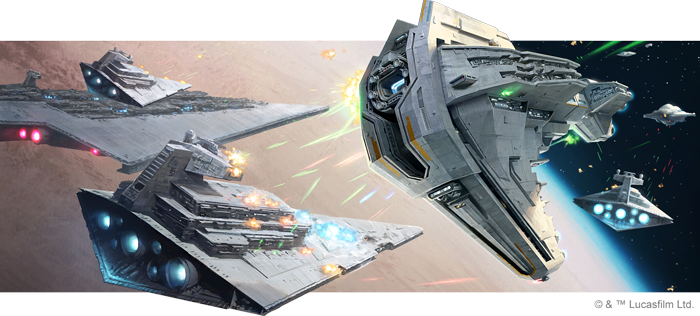
Fitting a Starhawk is predicated on mitigating its downsides: it’s expensive, so knowing when to stop upgrading it is important. Your opponent wants it dead and will have the luxury of bringing half their fleet onto your slow, scary ship and you need to deny that. The Starhawk’s title selection is all about durability and every title gives you a defence token. The ship comes packaged with Kyrsta Agate for a reason. Kyrsta’s ability only benefits a single ship so, you get more value from her by putting her on the largest ship possible. You get more Kyrsta for your buck that way. Then, a carefully cultivated spread of upgrades to your firepower and Officer slots rounds out the ship. I’m fond of Walex Blissex for making it even harder to kill and Linked Turbolaser Towers for dice control. DBY-827 Heavy Turbolasers are another contender, and exemplify the phrase the best defence is a good offence. Special mention goes to the Magnite Crystal Tractor Beam Array with Concord, a lavishly expensive way to pin down and murder an enemy ship. I recall the description of the Liberty as a ship meant to kill anything it can’t outrun, and outrun anything it can’t kill. A Magnite-equipped Starhawk has less finesse: it kills anything it can’t outrun, and kills everything else too.
Considerations for Rebel Large Ships – “And I do not tolerate fools in my navy.”
The Salvo Question
Armada Wave 7 and 8 were both aimed at bringing large ships back into prominence after years of suffering in a game that prioritised swarms of small ships. The introduction of Salvo defence tokens in Wave 8 (2020) marked a turning point in the capital ship combat of Armada. When outfitting a large ship, the Salvo Question is now an important consideration. A quick intro: the Salvo token is a defence token that allows your ship to return fire against an enemy ship that has attacked you. It uses your ship’s printed rear battery value and has several restrictions to prevent it from getting too strong. It’s a defence token that protects your ship under the same logic that a dead enemy ship poses no threat.
There are a few ways to access this token, and two of them (Kyrsta Agate and Concord) are unique to the Rebels. Then, you have DBY-827s and Flak Guns, which greatly enhance Salvo’s killing power and range, respectively. Since Salvo uses your printed rear battery to determine how many dice you roll in the attack, it strongly favours ships with large derrières. Any ship with 3 native rear battery dice (the highest non-huge ship value) is a potential candidate. Said ships may need Reactive Gunnery/Flak Guns/Kyrsta Agate to get the token in the first place. Then, DBY-827s and Flak Guns can enhance them from threat to potent ship build.
The thought process that determines the Salvo potential of a ship:
- Does this ship have a printed rear battery of 3 dice?
- Does it have black dice in its rear battery?
- Do I have to fit Local Fire Control or Reactive Gunnery to give it access to Salvo?
- If it has black dice, is there space for DBY-827s for the infamous hit-crit result?
- Is it worth putting Flak Guns on it to increase my Salvo range?
- Based on the above strengths and weaknesses, should I make a Salvo build?
The ideal Salvo ship has a rear battery of 3 dice, preferably with black dice. It also wants an Offensive Retrofit slot to improve Salvo range with Flak Guns, and a Turbolaser slot to improve damage output. If your ship has no native Salvo token, then you’ll need to give up a Defensive Retrofit or Weapon Team slot for one of the two upgrades that gives you access to a Salvo. If you’re a Rebel player, you get a third option: Kyrsta Agate. She’s outlined below.
Based on the above criteria, the Starhawk Mark I is an ideal Salvo ship, nailing every category and having a native Salvo. The Starhawk Mark II loses the black die and Flak Guns would only benefit one of its dice (the blue). You have another two options in the Rebel roster. First, the Home One, which has a fat rear battery. The cheaper Command variant pairs well with Flak Guns for a long ranged kickback and still has lots of space for other upgrades. Lastly, the Assault Frigate Mark II A, the Rebel medium ship is a candidate for a cheap salvo build with your choice of Local Fire Control or Reactive Gunnery.
In any case, if you’re kitting out an MC80 Home One or Starhawk, I urge you to look at a Salvo build to pair with their inherent durability. Doubly so, since the Rebels have…
Kyrsta Agate
Kyrsta Agate sort of defined the competitive meta-game in the wake of her release. She gives her own ship a non-Scatter defence token, and gives her ship the ability to receive a defence token’s effect no matter what external force is preventing its use. As a commander, she has one job: to make a single ship ruinously powerful. Since she only benefits her own ship, you get far more value from her the larger her ship is. Which explains why she was packed with the Starhawk, the largest Rebel ship available. She was made for large ships and you need serious justification to put her on the Assault Frigate Mark II.
Commodore Agate gets a mention in this article because she singlehandedly improves any large ship she’s stationed on. She gives you a choice of improving a ship’s defence through regular defence tokens (Brace, Contain [don’t.], Evade, Redirect) or improving its killing power with a Salvo token. You can offset your Liberty’s softness with her. You can make an MC80 Home One devastatingly durable. Your Providence just got cheaper and made up for its lack of Defensive Retrofit slots. This ability triggers at deployment and you can tailor your token choice to your opponent’s fleet. In addition to these upsides, she’s an incredibly cheap commander, giving you more room to expand your fleet. If you’re ever building a Rebel fleet anchored around a single large ship, give her consideration.

Notable Upgrades
Admiral Raddus
Raddus dumps a single ship on the table, preferably in a position that is extremely unfavourable to the opponent. Just make sure you understand his rules and put him in a ship that is not set aside. He only affects a single ship, and you get more value out of him when targeting something large and expensive. He’s limited to Command 3 ships, which excludes the Starhawk, but is otherwise a great way to get your Liberty into a strong flanking position, or to bring an MC75 into punching range of the enemy.
Kyrsta Agate (Officer)
Oh god, not her again. Even if you didn’t take her as a commander, her name still haunts you. She gets much more value on a Salvo-built ship, because her critical effect is the only one in the game that triggers on Salvo attacks. She converts your abundance of Red and Blue critical results on any attack into extra defensive value. It keeps a ship alive for longer. Or you can use her to refresh your Salvo and whack someone again while fishing for another critical effect to do it all over again…
Lando Calrissian (Officer)
He’s a simple, single-use Officer that forces your opponent to re-roll their attack. Use it to mitigate a particularly brutal attack that is key to your opponent’s strategy, like that angry Kuat Refit blowing its External Racks at you. Lando is a bit dependent on your opponent having a large attack, but he’s not useless if he even reduces the effectiveness of a mid-sized attack. A little meta-dependent but never out of style.
Walex Blissex
Single-use. This lets you regain one of your discarded defence tokens. Particularly useful on ships that don’t have duplicate tokens (see: Starhawk, Providence) or for getting your Brace back. Just be aware of his narrow timing window.
Caitken and Shollan
These two friendly fish give the Rebels a way to manage dice randomness. They’re especially beneficial to ships with large pools of dice in one colour, which is generally a large ship characteristic. A handy way to fix a large number of unpredictable red dice on your Liberty or Starhawk. They’re not cheap, but they know what they’re about.

Electronic Countermeasures
ECM lets gives you a crucial defence token back when your opponent denies it with an Accuracy result. You’ll usually use it to restore your Brace. It’s been nerfed a lot since its original incarnation and Kyrsta Agate (Commander) gives a similar effect, so it sees less use with Rebels.
Reinforced Blast Doors
This is a simple way to basically increase a ship’s HP by 3. RBDs are particularly good on large ships, because they typically survive long enough to actually use it. Be mindful of the timing window.
Linked Turbolaser Towers
This is the hot new way to improve your red dice. If you don’t have a more specific turbolaser upgrade in mind, LTTs are there to make your red dice more consistent. Winner. This card would probably still be worthwhile if they removed its second ability.
Conclusion – “Traveling with you three is like being on a ship full of children.”
That’s the first Dockyard article. It’s a longer one, but Armada is a big game and the ships deserve a comprehensive overview. The big Rebel ships are a diverse and powerful bunch that have only improved with age. Outfitting them requires care – both for picking the right ship for the job, and the right upgrades. In the end, it’s hard to go wrong with them, and even the hulls that were power-crept have been given new life through recent releases. Keep an eye out for more of me as I continue in my one-woman quest to revive Armada in the internet’s eyes.

